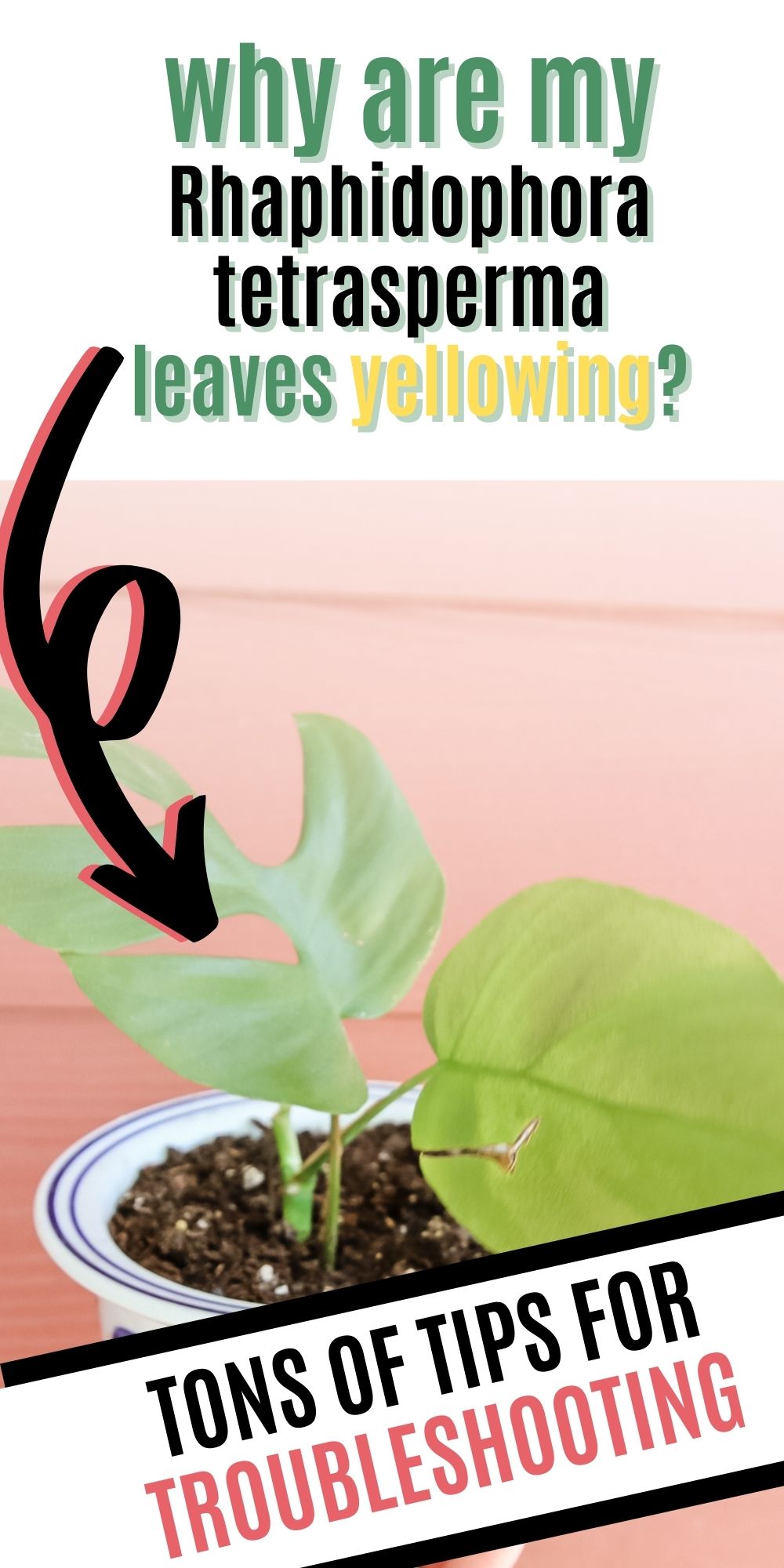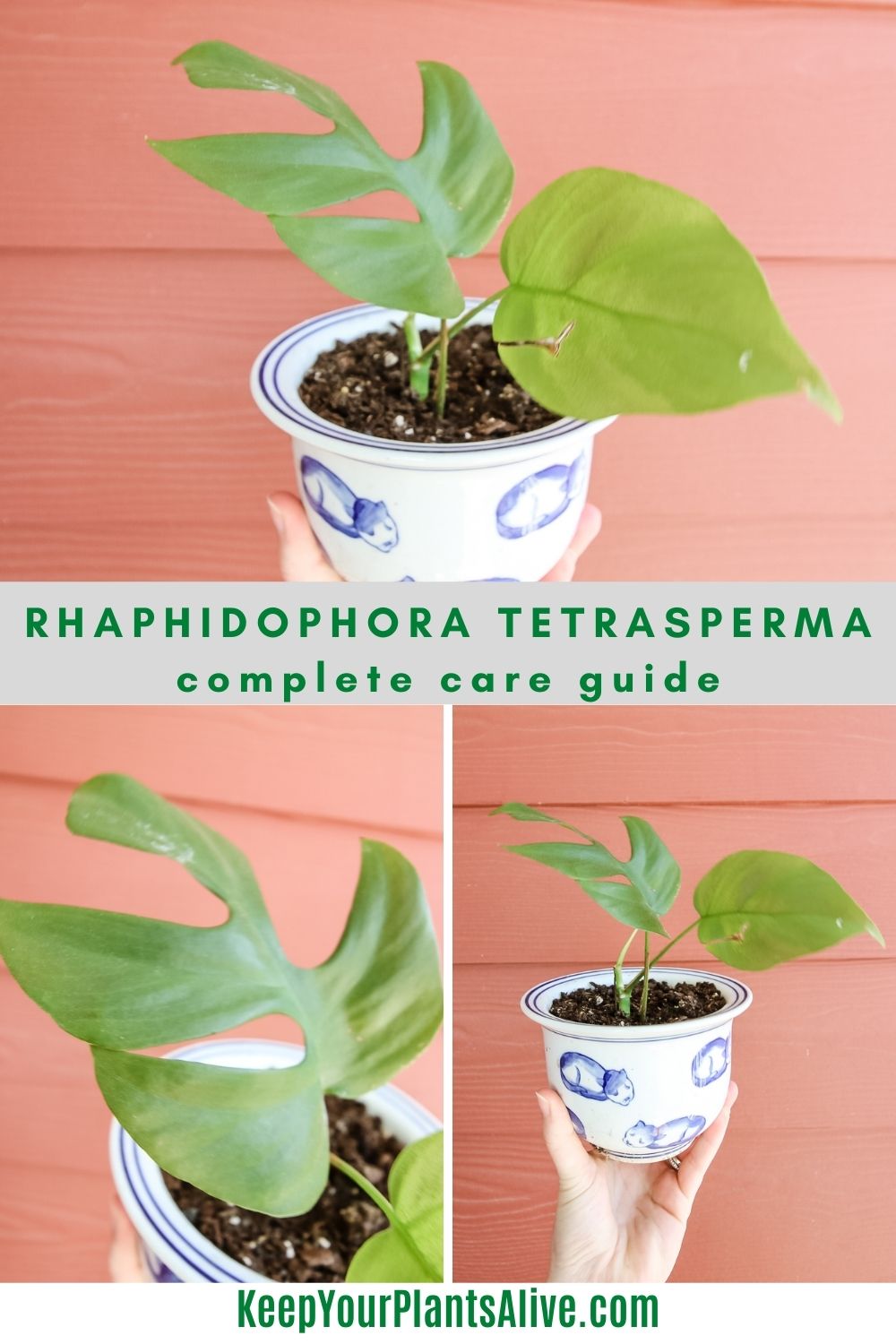Wondering how to propagate Rhaphidophora tetrasperma? Here is a step by step guide to get your plant growing new babies soon!
Rhaphidophora tetrasperma is a beautiful vining plant that has become ultra popular. It has big, fenestrated leaves and grows super quickly.
Get my complete Rhaphidophora tetrasperma care guide!
Luckily, this is a plant that propagates easily in water. That means you can easily root and share your beautiful plant!
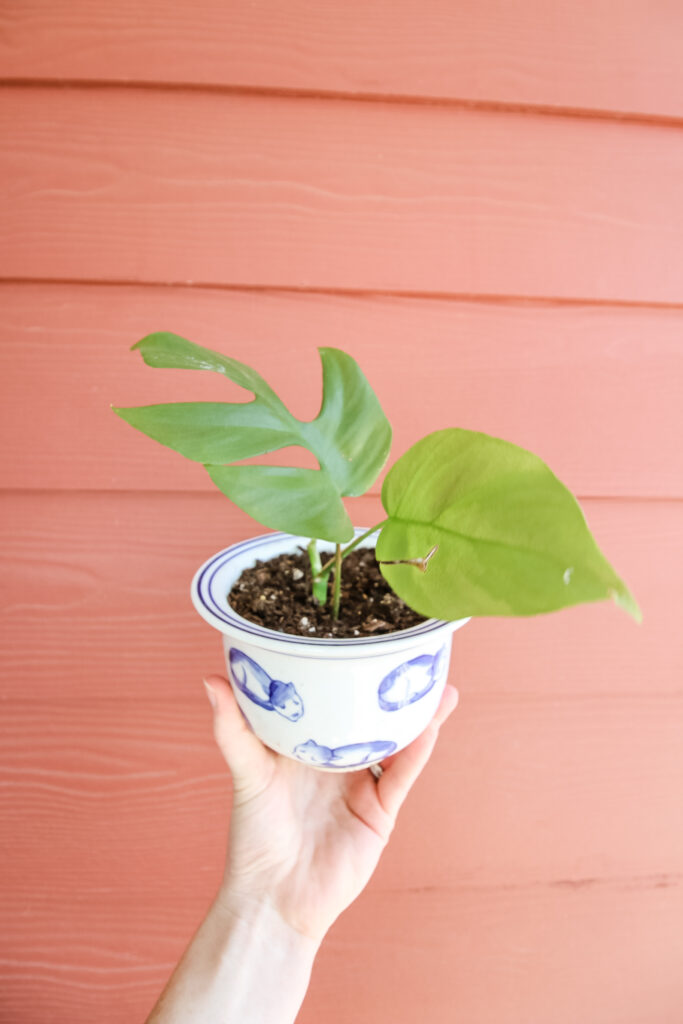
Rhaphidophora Tetrasperma is also known as:
- Mini monstera
- Mini split-leaf
- Ginny philodendron
- Monstera ‘Ginny’
- Philodendron Piccolo
- Monstera minima
Read my complete guide on why is my Rhaphidophora tetrasperma turning yellow!
Why propagate Rhaphidophora tetrasperma?
There are 2 main benefits to propagating a plant.
1, of course, you get new baby plants!
2, you can tame an unruly plant. This could mean your plant is leggy - long branches without leaves. Or, maybe it's just outgrown it's trellis or planter.
Cutting a plant will encourage it to grow more bushy and fill out closer to the base.
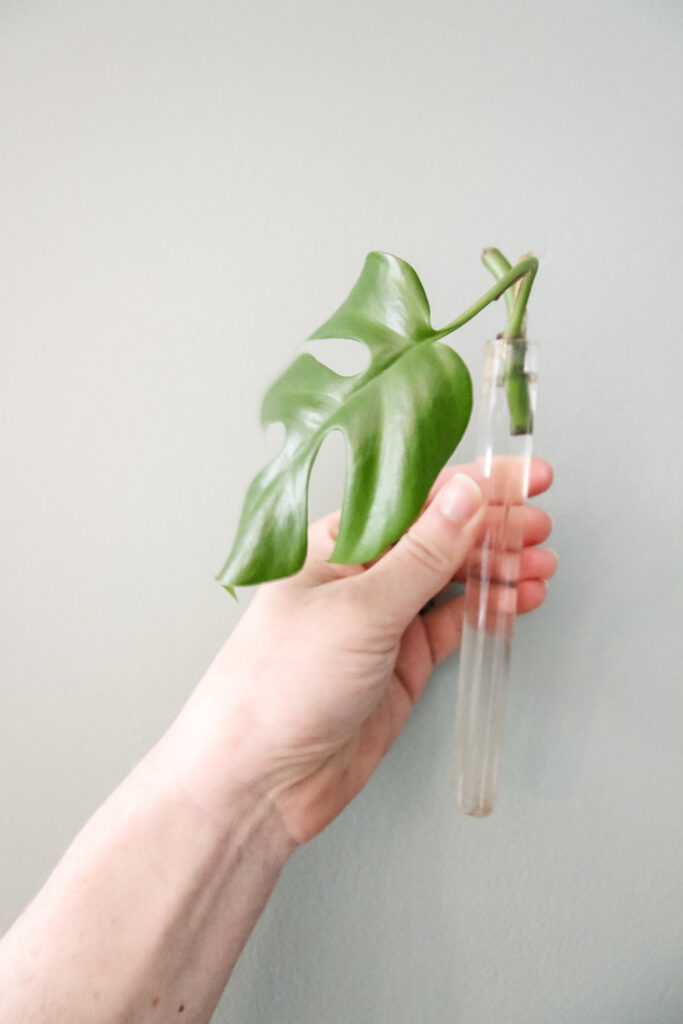
Can you propagate Rhaphidophora tetrasperma in soil?
Some people have success rooting their plants in moist soil. If you do this, add rooting hormone and cover the pot with a plastic bag (loosely) to create a greenhouse effect.
I personally prefer to root in water so I can monitor root growth easily!
Can you root a Rhaphidophora tetrasperma leaf?
You can't root this plant without a node. A leaf by itself won't do it - you need the bump of stem it connects to.
If a leaf gets knocked off your plant, lay it to rest - it won't grow roots on it's own.
Can you root Rhaphidophora tetrasperma without a leaf?
You do not need a leaf to propagate this plant - only a piece of stem with a node on it. However, in my experience, it takes cuttings a LOT longer to propagate without a leaf! Be patient, change the water, and you can still get roots!

How to propagate Rhaphidophora tetrasperma
Tools needed:
- Clean scissors
- Jar of water (I like test tubes)
- Parent plant
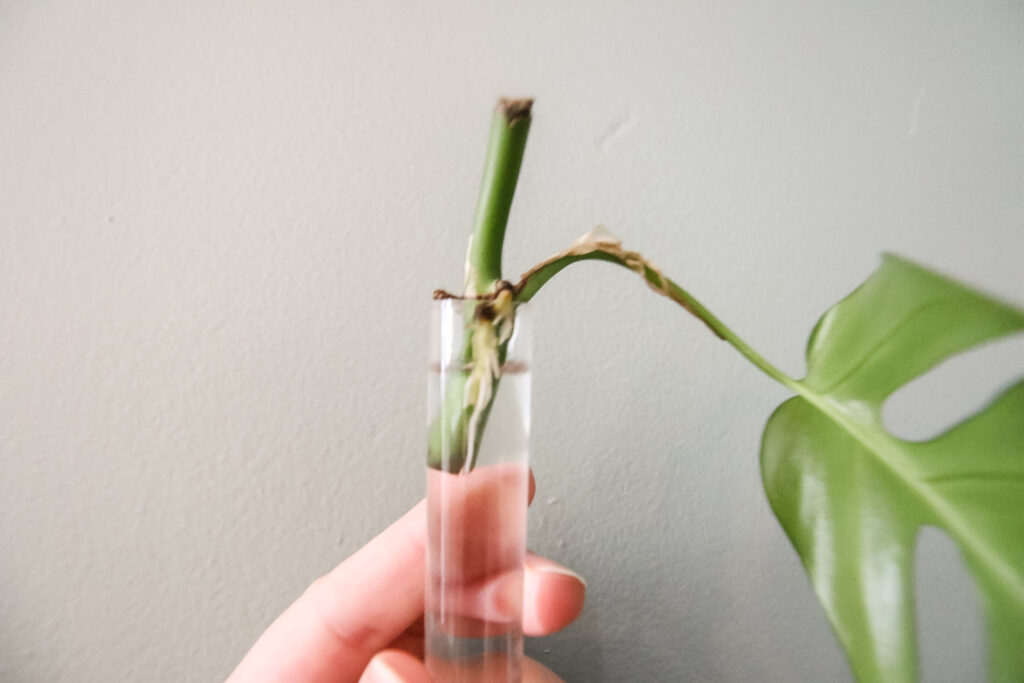
Steps to propagate a mini monstera
STEP 1 - identify a healthy branch with a node
You can attempt to root a dying branch, but it usually just rots in the water. Instead, choose a healthy branch, preferably one with new growth.
Where is the node on a mini monstera?
You will want to ensure that your cutting has at least one node. The node is a bump on the leaf where roots and leaves grow from. No node, no roots!
STEP 2 - make the cut
Cut your plant with clean, sharp scissors.
STEP 3 - place in water
Place the cutting in water. If a leaf will fall under the water line, remove it or it will rot and clog up the water!
STEP 4 - let root
Let sit until roots form - usually 3-4 weeks. Wait until the roots are 2 inches long or have secondary roots - mini roots growing off the roots - to plant in soil.
STEP 5 - plant in soil
Plant in soil and treat as you would an adult plant!
How to propagate Rhaphidophora tetrasperma
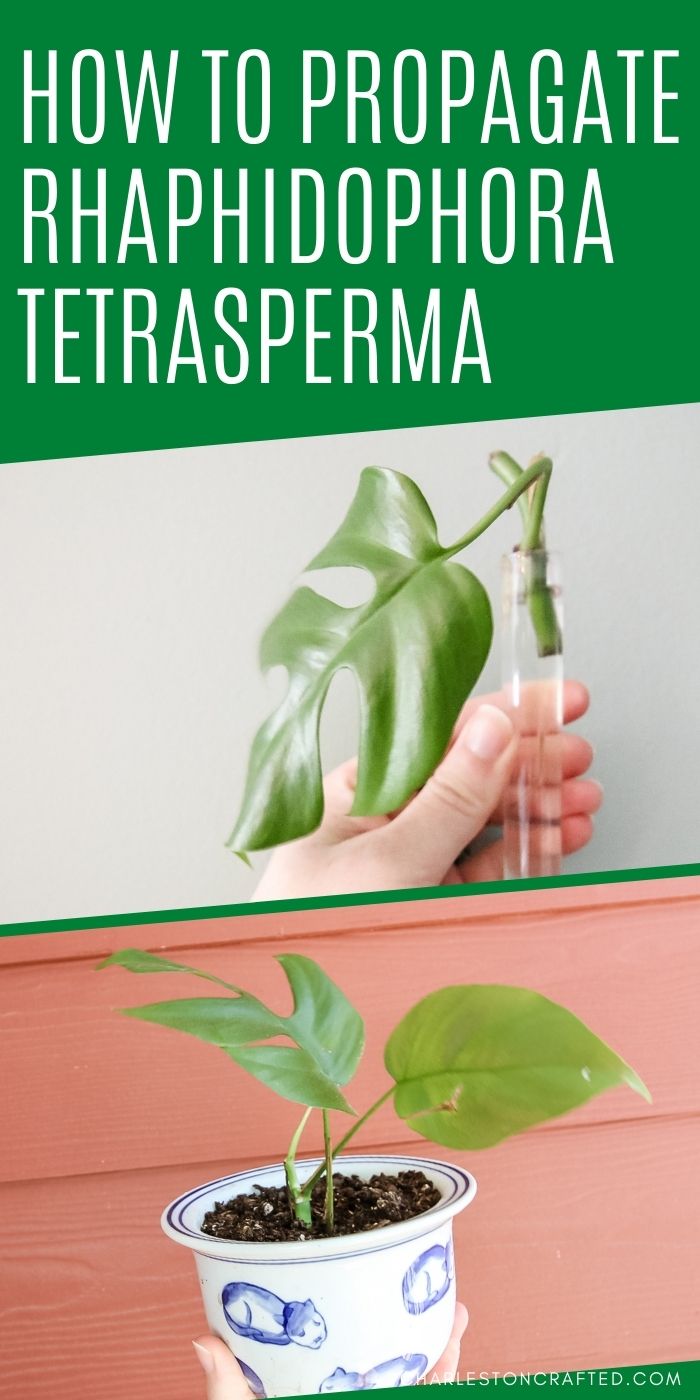
Here's how easy it is to propagate your mini monstera plant from a cutting!
Materials
- Parent plant
Tools
- Scissors
- Jar of water
Instructions
- Identify a healthy branch of your plant with new growth
- Cut off a section with at least one node - the bump that leaves grow from.
- Remove any leaves that will fall under the water line.
- Place in water, being sure at least 1 node is submerged.
- Keep the water topped off and change it once a week if it's looking foggy.
- Once the roots are 2 inches long, plant in soil.
- Treat like you would a parent plant.
Thanks for reading!


Hey there, I'm Morgan, a houseplant enthusiast from sunny Charleston, South Carolina. Growing up surrounded by my mom's lush orchids and African violets, I discovered the magic of bringing nature indoors. Thanks to the pandemic, I delved deeper into houseplants, discovering their power to uplift moods and transform spaces. I'm here to spill all my secrets, helping you pick the perfect houseplant - and make it happy. Let's keep your plants alive, together! 😊

